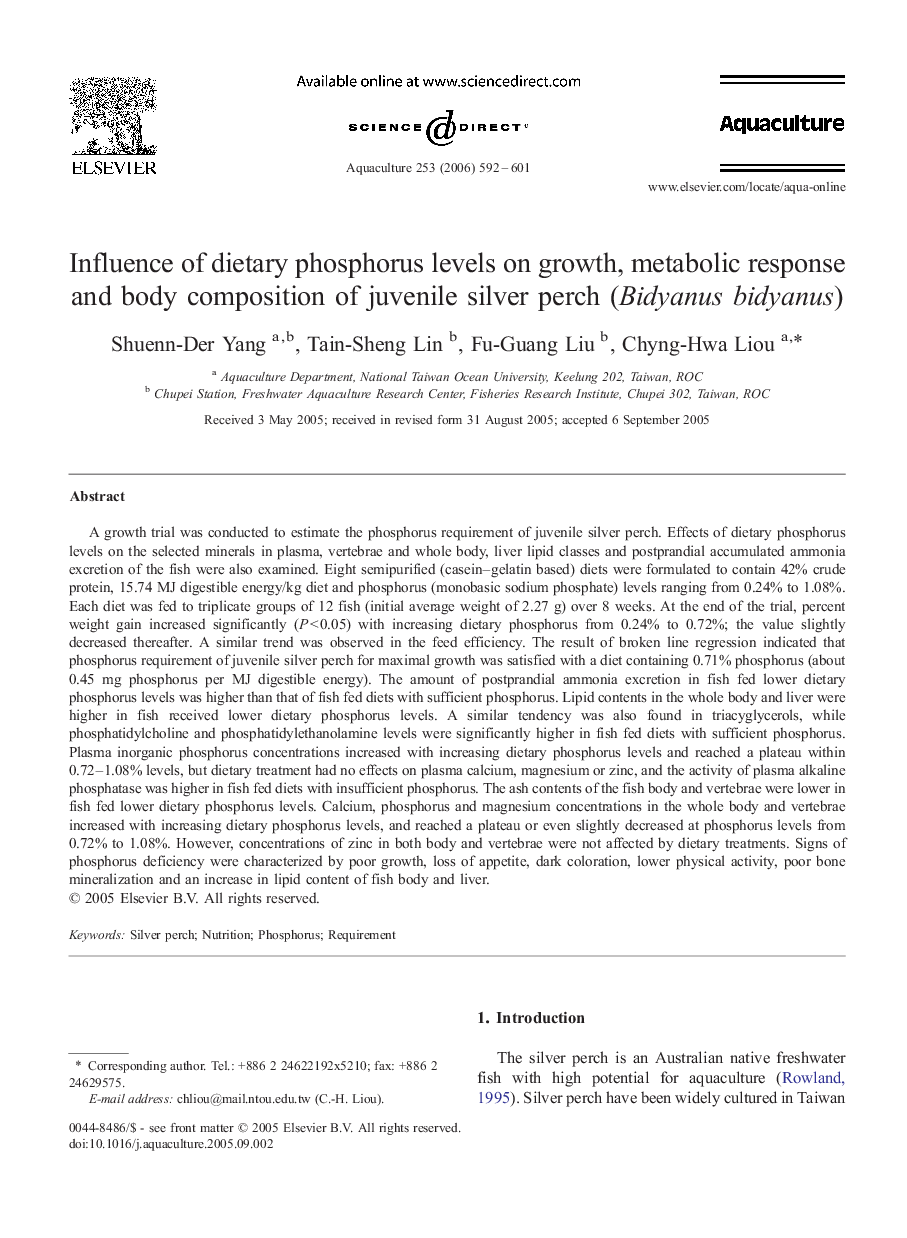| Article ID | Journal | Published Year | Pages | File Type |
|---|---|---|---|---|
| 2426265 | Aquaculture | 2006 | 10 Pages |
A growth trial was conducted to estimate the phosphorus requirement of juvenile silver perch. Effects of dietary phosphorus levels on the selected minerals in plasma, vertebrae and whole body, liver lipid classes and postprandial accumulated ammonia excretion of the fish were also examined. Eight semipurified (casein–gelatin based) diets were formulated to contain 42% crude protein, 15.74 MJ digestible energy/kg diet and phosphorus (monobasic sodium phosphate) levels ranging from 0.24% to 1.08%. Each diet was fed to triplicate groups of 12 fish (initial average weight of 2.27 g) over 8 weeks. At the end of the trial, percent weight gain increased significantly (P < 0.05) with increasing dietary phosphorus from 0.24% to 0.72%; the value slightly decreased thereafter. A similar trend was observed in the feed efficiency. The result of broken line regression indicated that phosphorus requirement of juvenile silver perch for maximal growth was satisfied with a diet containing 0.71% phosphorus (about 0.45 mg phosphorus per MJ digestible energy). The amount of postprandial ammonia excretion in fish fed lower dietary phosphorus levels was higher than that of fish fed diets with sufficient phosphorus. Lipid contents in the whole body and liver were higher in fish received lower dietary phosphorus levels. A similar tendency was also found in triacyglycerols, while phosphatidylcholine and phosphatidylethanolamine levels were significantly higher in fish fed diets with sufficient phosphorus. Plasma inorganic phosphorus concentrations increased with increasing dietary phosphorus levels and reached a plateau within 0.72–1.08% levels, but dietary treatment had no effects on plasma calcium, magnesium or zinc, and the activity of plasma alkaline phosphatase was higher in fish fed diets with insufficient phosphorus. The ash contents of the fish body and vertebrae were lower in fish fed lower dietary phosphorus levels. Calcium, phosphorus and magnesium concentrations in the whole body and vertebrae increased with increasing dietary phosphorus levels, and reached a plateau or even slightly decreased at phosphorus levels from 0.72% to 1.08%. However, concentrations of zinc in both body and vertebrae were not affected by dietary treatments. Signs of phosphorus deficiency were characterized by poor growth, loss of appetite, dark coloration, lower physical activity, poor bone mineralization and an increase in lipid content of fish body and liver.
